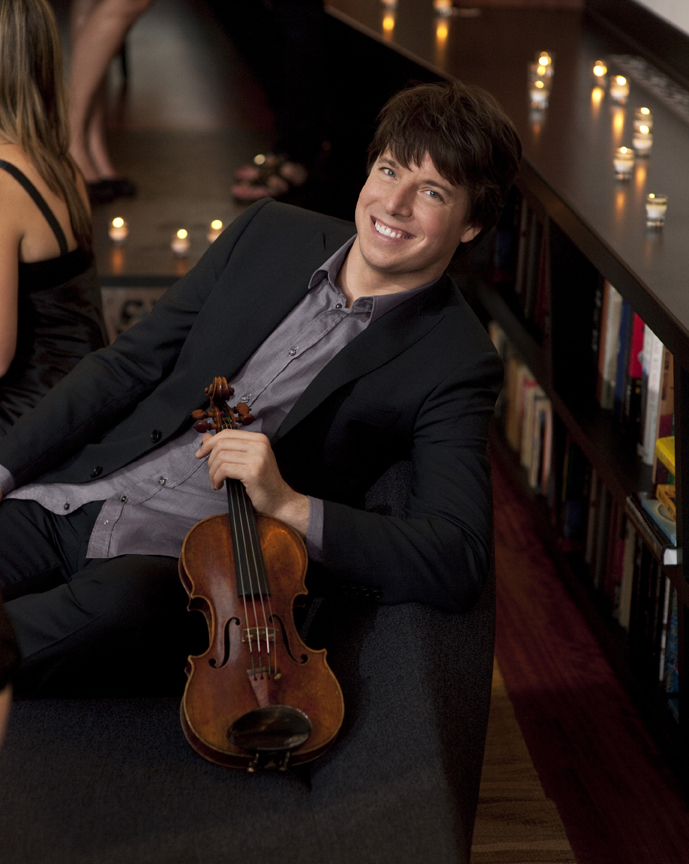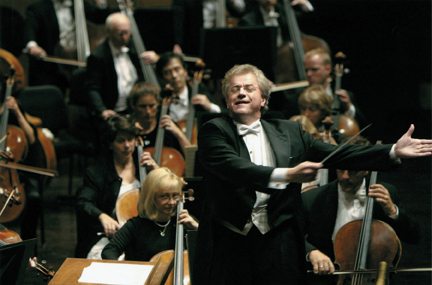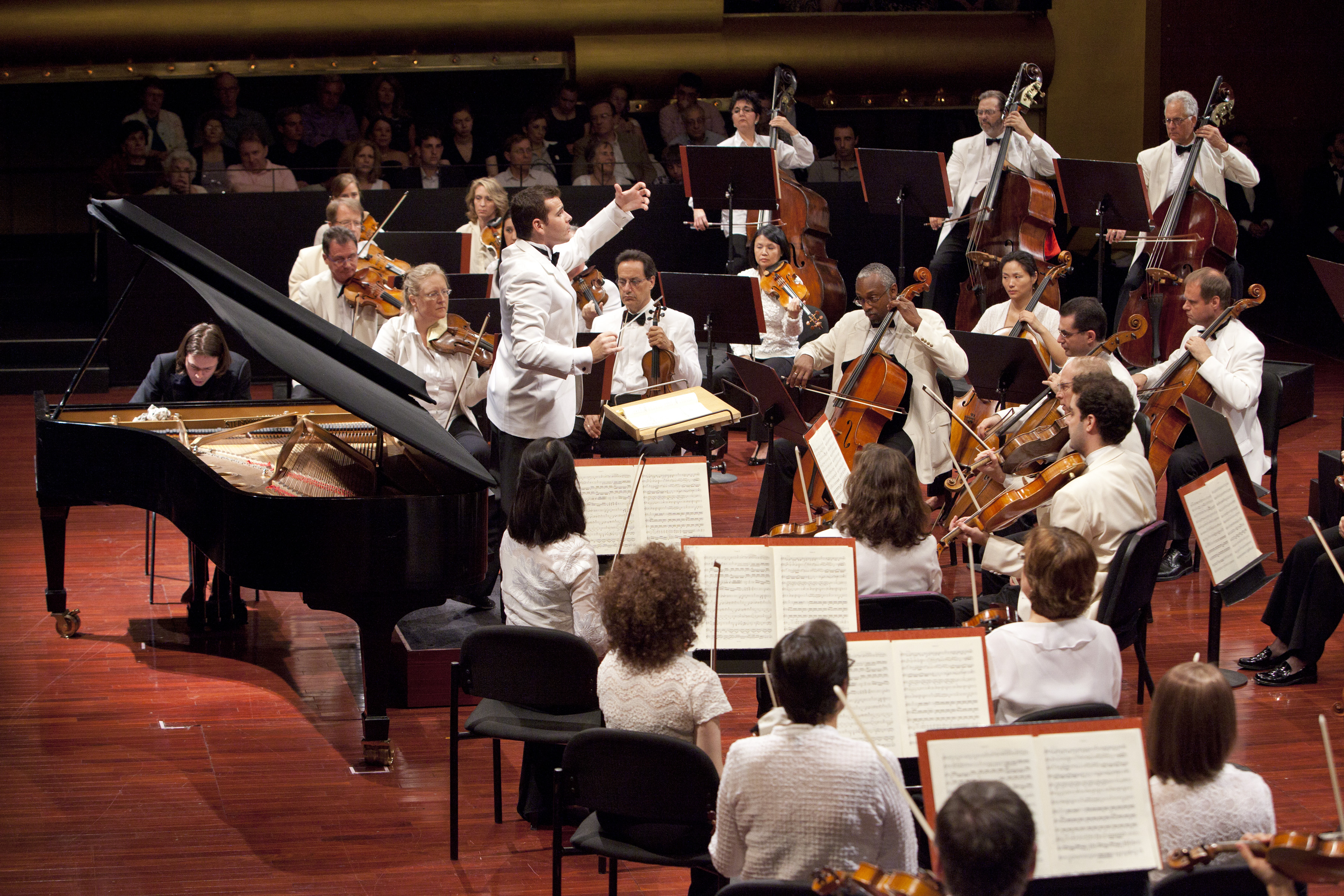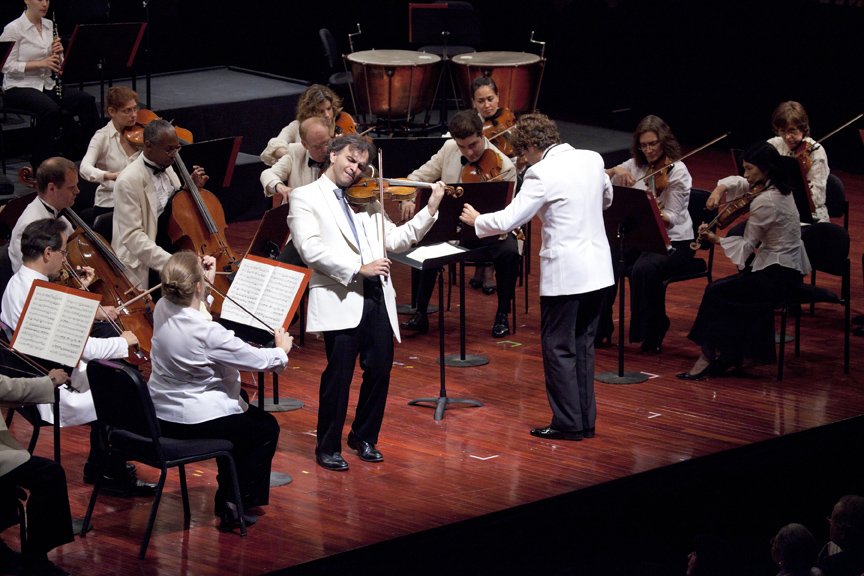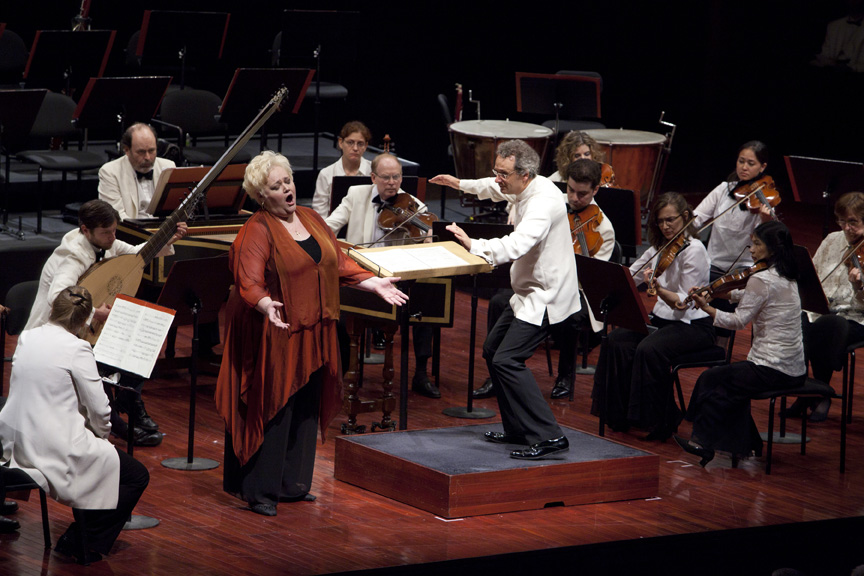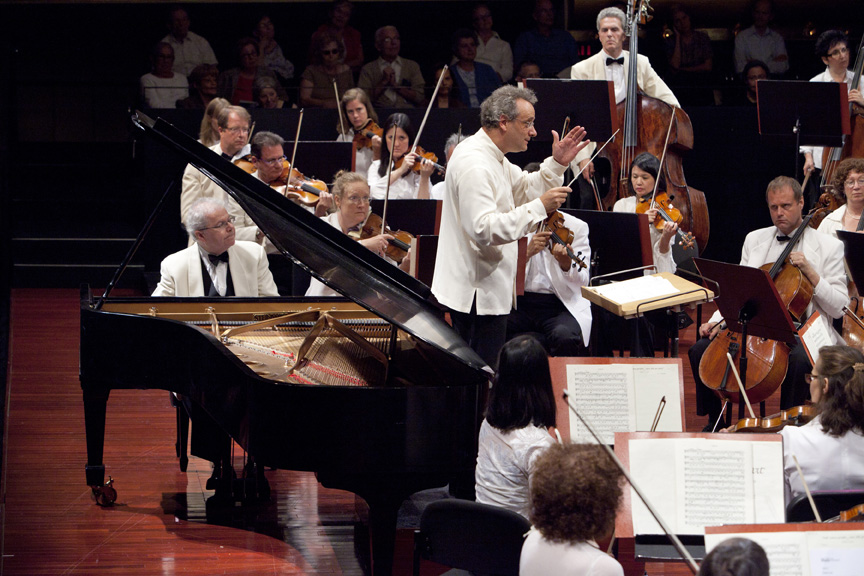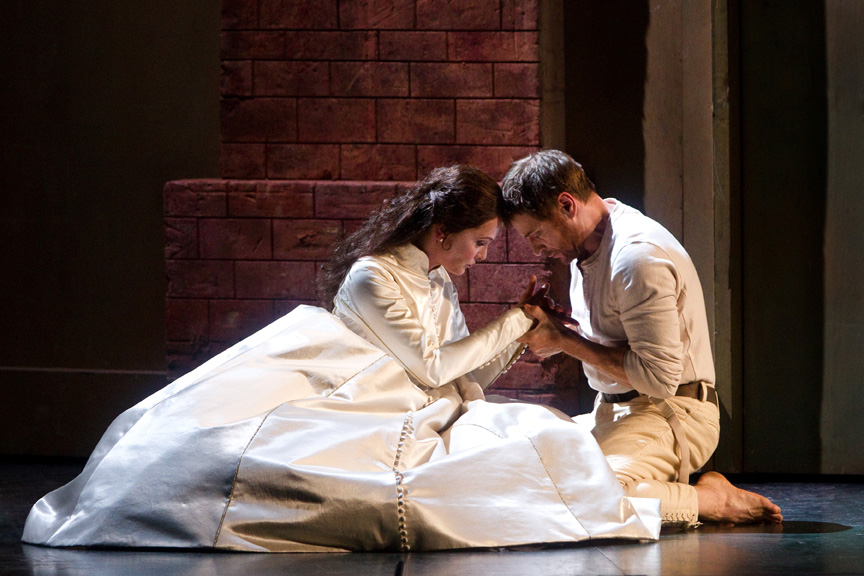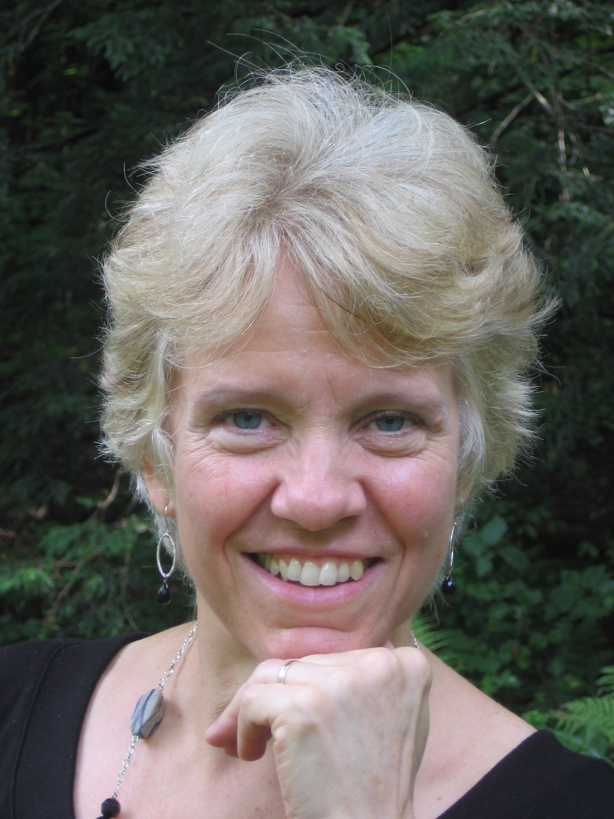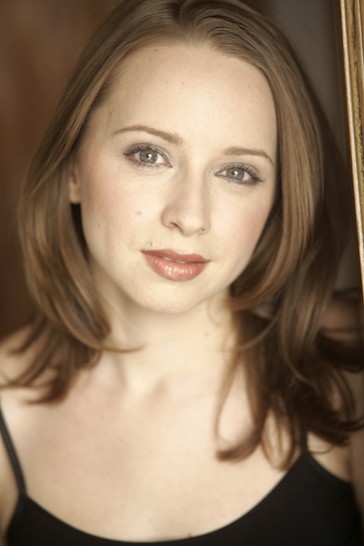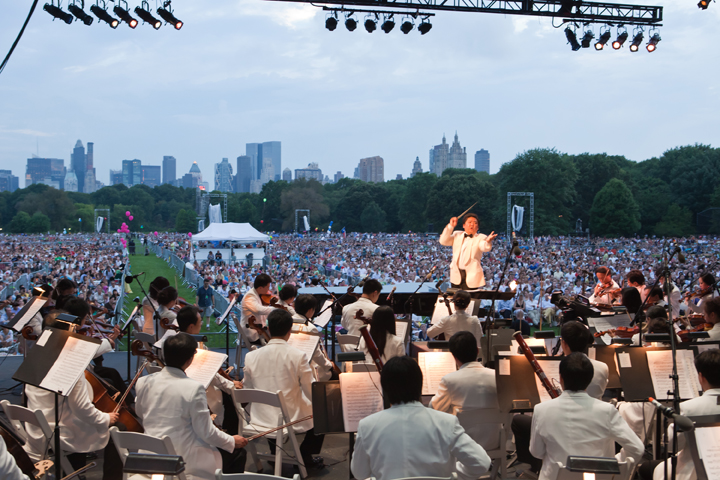This No-Mozart, all-Romantic program was one of the Festival’s best. It opened with Weber’s Overture to the opera Der Freischütz and closed with Schumann’s Symphony in D minor No. 4, Op. 120, in the revised 1851 version. In between, Joshua Bell, Jeremy Denk and the Orchestra’s string section played Mendelssohn’s Concerto for Violin, Piano and Strings in D minor, the second Festival program featuring two major works in the same tonality. Written when the composer was 14 years old, the Concerto is not top-notch Mendelssohn and is only infrequently performed, but it is full of youthful romanticism, exuberance, and the promise of future greatness. The soloists reveled in the brilliant passage-work, alone and together, tossing off the long runs in parallel thirds with easy virtuosity and perfect coordination; Bell’s pure, expressive tone cast a silvery radiance over the lovely melodies. The Orchestra, under-employed except for the Introduction, offered discreet support, and everybody had a grand time.
The performance of the Weber and Schumann indicated that Langrée harbors a romantic soul under his penchant for cool, speedy, almost vibratoless Mozart. He encouraged the musicians to surrender to the passionate ardor of the music using their warmest, most intense sound, and they responded whole-heartedly. The Overture overflowed with vigorous energy without getting hectic; the strings sang out, the wind solos were wonderful (those Freischütz horns!).
Schumann cast his fourth Symphony in his favorite “Fantasy” form, with its four contrasting movements melting into each other. Originally composed in 1841, it was actually his second symphony, but its negative reception caused him to put it aside. Ten years later, having written two more symphonies, he revised it, refining the transitions between the movements and adding a lot of doubling to the orchestration – a decision that has remained controversial: the texture gains substance but loses transparency. Langrée used the second version; while he could not save the sound from becoming murky at times, its richness made up for the lack of clarity, and he brought out the character and changing moods of the music: the vitality of the fast sections, the poetry and romanticism of the slow ones, the assertive robustness of the Scherzo.
Mozart visited his Festival at the Pre-Concert recital, when Joshua Bell and Jeremy Denk played his “big” B-flat Major Sonata K.454, written in 1784, the first of his last three great violin and piano sonatas. Though Avery Fisher Hall is hardly the best place for intimate chamber music, the performance was admirable. Frequent partners, the two players have achieved an extraordinarily high level of ensemble; they took over each others’ lines, calibrating the sound for relative prominence, built on each others’ dynamics, tonal and expressive intensity, and created a true “conversation between friends.” Their subtle interplay was even more impressive than their dazzling collaborative virtuosity in the Mendelssohn Concerto.

